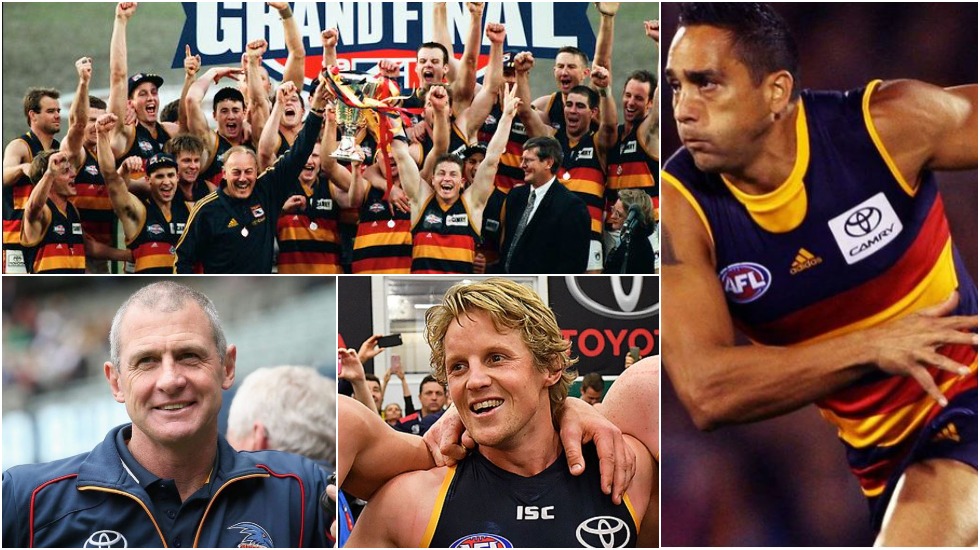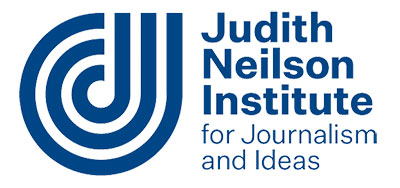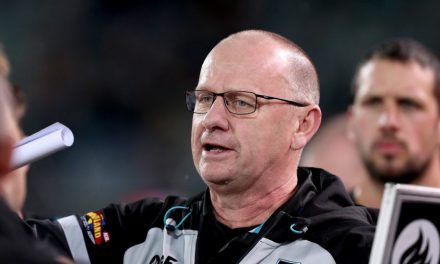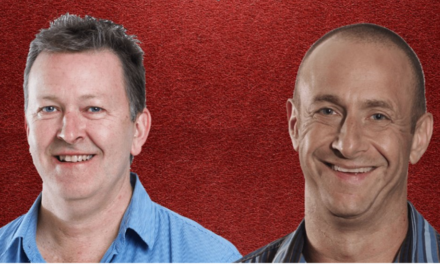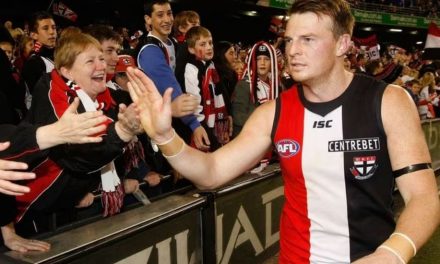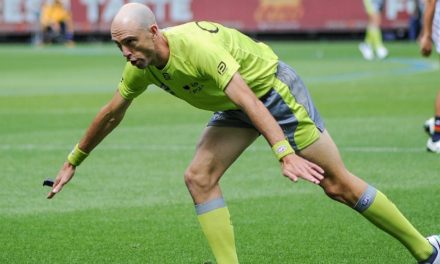Clockwise from top left: Adelaide’s 1997 flag; disillusioned Andrew McLeod; current skipper Rory Sloane; the late Phil Walsh.
Civil war ended in South Australia 30 years ago, or so the official records state. The VFL’s “divide and conquer” campaign did break the impasse with a dogmatic (or procrastinating) SANFL on Australian football’s awkward national expansion.
The war of 1990 that divided SA football and united nine rivals to stop Port Adelaide from claiming an AFL licence was seemingly “won” by the ultra-proud SANFL that was intending to hold out of the VFL’s growing empire for at least another three years.
Now the peace had to be won – along with a national title for SA football’s esteem.
Inside (the now demolished) Football Park concrete bowl, successful South Australian state-of-origin coach Graham Cornes gathered more than 50 footballers in search of his inaugural Adelaide squad for a team that still had no colours, no jumper, no nickname – and did not sign its AFL sub-licence with the SANFL until February 13 1991.
Those footballers grouped as 10 tribes – each defined by their SANFL allegiances.
Cornes had some job on his hands. So did club chairman Bob Hammond and chief executive Bill Sanders in building from scratch what has become South Australia’s biggest sporting entity, and biggest influence on the state’s morale.
Thirty years on, the Crows seem to be back at ground zero.
A new chairman, former state Premier and SANFL president John Olsen, is compelled to be “an agent of change” for a monolith that has recently taken on national baseball and eSports, among other non-football adventures, in its empire building. Olsen wants (as strange as it seems to say after 30 years) … a football club.
A first-time coach, former Sydney defender and West Adelaide player Matthew Nicks, is charged with not only rebuilding a team but reconnecting a squad that (by its own admission) fractured into three factions during 2019 that marked the end of Don Pyke’s short-lived era.
Adelaide holds the wooden spoon for the first time. It has returned to the back of the pack; to its starting position of 1991. This seems staggering. There is not just a football team to revive. There also is a football club to rebuild.
An anniversary – the 30th – offers the Adelaide Football Club a timely opportunity to reflect on where it has been, where it has foolishly strayed and where it needs to be.
A club that shut down and pulled down its museum – one of the best in Australian sport – has paid a heavy price in proving no organisation can fulfill the future if it ignores its past. To quote George Orwell: “The most effective way to destroy people is to deny and obliterate their own understanding of their history.”
The long-standing – and so obvious – comparison that has repeatedly been put against the Crows is Western Australia’s first VFL-AFL team, West Coast, that had a four-season jump on Adelaide by entering the VFL in 1987.
On the 30-season markers, the read on the Adelaide (1991-2020) and West Coast (1987-2016) tale of the tape says –
PREMIERSHIPS – West Coast (three, 1992, 1994 and 2006); Adelaide (two, 1997 and 1998)
GRAND FINALS – West Coast (six, 1991, 1992, 1994, 2005, 2006 and 2015); Adelaide (three, 1997, 1998 and 2017)
FINALS SERIES – West Coast (21); Adelaide (15).
MINOR PREMIERSHIPS – West Coast (three, 1991, 1994 and 2006); Adelaide (two, 2005 and 2017).
GAMES WON – West Coast (372 of 707); Adelaide (363 of 668).
WOODEN SPOONS – West Coast (one, 2010); Adelaide (one, 2020).
Not on the scoreboard is the turmoil each AFL club had faced – West Coast with the “drug culture” questions sparked by the fall of team legends, in particular captain and Brownlow medallist Ben Cousins; Adelaide with the salary cap investigation forced by the need to resolve Kurt Tippett’s mysterious contract; the sacking of coaches Brenton Sanderson and Don Pyke so soon after being handed contract extensions and the contentious Gold Coast pre-season camp in 2018.
Adelaide – unlike any other AFL club – has had to deal with the enormous pain of losing a rookie coach, Phil Walsh, in 2015 when he was killed in his family home.
An anniversary – particularly after three decades in the toughest football league in the land – marks the chance for celebrations.
But before the Crows can toast with champagne again, the Adelaide Football Club needs to clear the vinegar from its collective stomach.
Andrew McLeod is Adelaide’s longest-serving player with 340 AFL games and arguably its greatest with the debate including Brownlow medallist and board member Mark Ricciuto. He has walked away from official ties at the club – after recently serving as an AFLW assistant coach and with an indigenous community program – amid frustration in watching the objectives of the commercial empire at Adelaide erode the culture that defined the Crows.
McLeod’s observations of the recent transformation of the Adelaide Football Club suggest the Crows are far from that “authentic” football club put up as an objective by Walsh during his introductory media conference in the spring of 2014. We will never know why Walsh felt the Crows, after 25 seasons in the national league, lacked authenticity.
McLeod was at the forefront of building that once-admired culture that allowed the Crows to badge themselves as “The Team for All South Australians” on the eve of Port Adelaide’s rise from the SANFL to the AFL in 1997 (to take the Civil War finally on to a football field with the much-loved Showdown rivalry).
When Cornes started building the Crows 30 years ago, they were mocked as a group with no “heart and soul” and bringing the “Chardonnay set” (a la “theatre goers”) to Football Park. This changed with the Malcolm Blight premiership double in 1997-1998, in which McLeod won both Norm Smith Medals as best afield in the AFL grand final triumphs against St Kilda and North Melbourne.
And through the first decade of the 21st century, Neil Craig’s era put the Adelaide Football Club’s newly found and significant cultural soul on a seemingly solid foundation.
But McLeod no longer sees it – and he is not alone.
Speaking exclusively to McLeod last month, a day after he had joined the list of 80-plus frustrated Crows identities who opened their hearts in one-on-one sessions with Olsen, there was a measured response to every question. This contradicted the claims made by premiership teammate and current board member Rod Jameson who – during the civil war within the Crows family in June – labelled McLeod as “temperamental”.
McLeod declared: “I still have love for the people who make up this club. But what was a burning fire inside me is now just a flickering pilot light.
“I am not about throwing people under a bus. But I will speak up about how there has been a change in focus (at the club). It has become a corporate focus rather than a community focus.”
PLEASE HELP US CONTINUE TO THRIVE BY BECOMING AN OFFICIAL FOOTYOLOGY PATRON. JUST CLICK THIS LINK.
McLeod echoes the sentiments of a former long-serving, high-ranking club official who reflects on the five-year rule of Crows chief executive Andrew Fagan, saying: “He has made the club commercially stronger but culturally weaker.”
“We have lost our own beliefs during this change in focus,” adds McLeod. “We have lost our culture of family and community … and that is a sad thing.”
McLeod first went public with his concerns in June, when Adelaide was without a win on the field and concerned fans, backers and frustrated statesmen of South Australian football were asking critical off-field questions that had been ignored for too long.
McLeod noted the “corporation” sledge fitted the Crows while “the Adelaide Football Club, it’s not a particularly warm place.”
“They’ve taken most of the old photos down,” said McLeod on his “Bunji and Brettster Show” podcast with Adelaide 36ers basketball great Brett Maher. “(The club rooms) should tell you a story … the history of the people who came before us to lay incredible foundations. But no, everything has now been catalogued and if you want to see them, you have to go online to view them.
“I know I am not alone because I’ve had a lot of these conversations or messages from a number of my former teammates, past officials and many of our great supporters.
“That confirms to me that something is wrong.”
Olsen is now caught in that challenge of deciding how to realign the Adelaide Football Club with its culture after 30 years – by evolutionary change or with a revolution.
The next two months as critical as those of January and February 1991, when an inaugural squad was put in a hooped jumper based on South Australia’s state colours of red, gold and blue and dubbed the “Crows” in a play on the “Croweaters” label South Australians had carried for more than a century.
(The original theme of being “Lakers” at home at West Lakes in Adelaide’s western suburbs and wearing green, white and blue on a non-traditional guernsey ignoring bars, hoops and a sash was never going to make it off the marketing company’s whiteboard).
A new season then can start with new hope in March and (COVID permitting) grand anniversary celebrations such as the club’s second Hall of Fame inductions and picking the greatest Crows team of the first 30 seasons (a task Adelaide had on the planning table in 2019 when it was considering a similar theme).
Adelaide officially named a Team of the Decade in 2000 to mark its first 10 years in the big league. It was –
B: Ben Hart, Rod Jameson, Mark Bickley
HB: Nigel Smart, Peter Caven, Andrew McLeod
C: Greg Anderson, Andrew Jarman, Simon Tregenza
HF: Kane Johnson, Matthew Robran, Mark Ricciuto
F: Darren Jarman, Tony Modra, Matthew Liptak
R: Shaun Rehn, Chris McDermott, Tony McGuinness
Inter: Mark Mickan, Simon Goodwin, Rodney Maynard, David Pittman
Coach: Malcolm Blight
At the end of 2014, on the eve of Adelaide’s 25th season in the AFL, it seemed appropriate to revisit the process, even if the Crows did not (an early sign of the club’s board losing focus on their team’s history and culture – while Walsh noted a lack of authenticity at West Lakes).
At the end of the external process, 12 of the players from the Team of the Decade remained unshakeable in their rights to be honoured in an all-time team during 2015: Premiership captain Mark Bickley, Darren Jarman, Simon Goodwin, Ben Hart, inaugural captain Chris McDermott, Tony McGuiness, Andrew McLeod, Tony Modra, Shaun Rehn, Mark Ricciuto, Matthew Robran and Nigel Smart.
Rising to stardom in the 14 seasons after the foundation decade were: Defenders Ben Rutten, Michael Doughty, Nathan Bock, Nathan Bassett and Graham Johncock; midfielders Scott Thompson and Richard Douglas; midfielder-forwards Bernie Vince and the ultimately consistent Tyson Edwards and forward Brett Burton.
They displaced from the Team of the Decade defenders Rod Jameson and Peter Caven, who are replaced in the key defensive roles by Rutten and Bock; the entire centre line that was Greg Anderson, Andrew Jarman and Simon Tregenza; forwards Kane Johnson and Matthew Liptak and three from the interchange bench – inaugural club champion Mark Mickan, Rodney Maynard and premiership ruckman-defender David Pittman.
The “silver anniversary” line-up became –
B: Ben Hart, Ben Rutten, Michael Doughty
HB: Nigel Smart, Nathan Bock, Andrew McLeod
C: Simon Goodwin, Scott Thompson, Richard Douglas
HF: Bernie Vince, Matthew Robran, Tyson Edwards
F: Darren Jarman, Tony Modra, Brett Burton
R: Shaun Rehn, Mark Ricciuto (c), Tony McGuinness
Inter: Mark Bickley, Nathan Bassett, Graham Johncock, Chris McDermott
Coach: Malcolm Blight
And in 2021?
There are six players who immediately come into contention on the selection whiteboard – Patrick Dangerfield, four-time club leading goalkicker Eddie Betts, current captain Rory Sloane, unflappable key defender Daniel Talia, the club’s all-time goals record holder and former captain Taylor Walker, and lionhearted ruckman Sam Jacobs.
Five – all but Jacobs – move into the starting 18.
Talia takes Nathan Bock’s role in a key defensive tandem with Rutten.
Sloane commands a wing from Richard Douglas.
Walker fills the toughest spot to fill in all the Adelaide celebratory line-ups, the centre half-forward role previously held by Matthew Robran.
Betts goes into a pocket in place of Brett Burton to form the imposing line of Darren Jarman, Tony Modra and “Eddie”.
Brownlow medallist Dangerfield replaces former captain and Magarey medallist Tony McGuinness in the first ruck battery.
Does this team play two rucks to endorse Jacobs?
The four-man interchange bench is tough to settle. In theory, those dispelled from the starting 18 could easily sit on the bench. But there is the case to keep inaugural captain Chris McDermott and premiership captain Mark Bickley while moving aside defenders Nathan Bassett and Graham Johncock for Douglas and Robran.
The line-up would become –
B: Ben Hart, Ben Rutten, Michael Doughty
HB: Nigel Smart, Daniel Talia, Andrew McLeod
C: Simon Goodwin, Scott Thompson, Rory Sloane
HF: Bernie Vince, Taylor Walker, Tyson Edwards
F: Darren Jarman, Tony Modra, Eddie Betts
R: Shaun Rehn, Mark Ricciuto (c), Patrick Dangerfield
Inter: Mark Bickley, Chris McDermott, Richard Douglas, Matthew Robran
Coach: Malcolm Blight
Debate will go on and on and on … but not in question is what these men and every other man and woman who has worn the Adelaide tricolors since 1991 has sought to achieve for a football club that was once regarded as lacking “heart and soul”.
Finding the answers to the Crows’ current off-field challenge to realign the football club’s ethos to being the pride of South Australian football is underway. It is as important as Nicks’ mission to build a premiership line-up to re-establish Adelaide’s on-field reputation.

